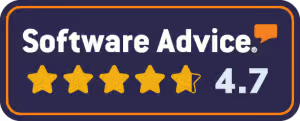Transitioning articles from print to digital requires more than just a simple copy-paste. It involves understanding the differences in reader behavior, attention spans, and the way content is consumed online. We get it. As a publisher, you and your team put your heart and soul into 10 to 15 articles a month to print in your magazine. However, it’s time to realize digital is a whole different animal. Sure, your articles are successful in print, but don’t let the success stop there.
You Need More Content
Publishers need more content to attract and retain online audiences. Print publications have space constraints that dictate the amount of content that can be included. However, digital offers virtually limitless space for publishing articles, videos, and images. As a result, publishers must produce a higher volume of content to keep pace with the continuous demand for fresh material.
With print publications, readers may spend more time engaging with a single article. Online audiences, though, are more likely to quickly scan through content and move on to the next item. Publishers must develop a strong content strategy that includes a variety of formats, topics, and delivery methods to cater to the varying browsing behaviors. By consistently producing high-quality content, publishers can meet the demands of online readers and maintain a competitive edge.
Not all publishers have the resources or capacity to continuously generate a high volume of content internally. If you can’t produce more, it’s time to explore aggregating content from reputable sources or partnering with content creators. Ultimately, the key lies in finding a balance between producing original content and utilizing external sources to meet the demands.
You Need Better Article Titles
Digital readers have been known to have shorter attention spans and are more likely to skim through content. An attention-grabbing title encourages them to click on the article, increasing reader engagement. While an article title such as, “The Benefits of Mindfulness Meditation,” might work perfectly fine in print, you need to transform your article for the digital audiences. Something a little more to the point like, “5 Ways to Find Your Inner Peace,” might create more curiosity and suggest a personal benefit.
“The article could be a Pulitzer Prize piece,” says Joel Pape, CEO and founder of MediaOS. “But if no one is clicking on it, if no one is reading it, it doesn’t matter.”
Choosing the right title for online articles also affects your SEO. Digital articles rely heavily on search engines to drive traffic. A well-crafted title with relevant keywords improves the chances of your article appearing in search engine results, increasing its visibility.
You Need Reader-Friendly Content
Publishers must transform their online articles to be easily digestible and visually appealing. This involves breaking up lengthy paragraphs into shorter sections, incorporating bullet points and subheadings for improved readability, and using engaging multimedia elements such as images, videos, and infographics to enhance the overall reader experience.
Sometimes publishers must face the harsh reality that their content may not be as good as they think it is. “You need to be delivering curated, customized, and personal content,” says Joel. If the number of emails being sent out doesn’t have a high ratio of responses, your content could be the problem.
Most likely 80% of your website traffic is mobile, making it extremely important to adjust articles for mobile devices to ensure fast load times and images that accommodate various screen sizes. Additionally, publishers should utilize interactive features and social sharing functionalities to encourage reader engagement and facilitate easy sharing of content across online channels.
To Sum It Up
When your publication is rocking it in print, there’s absolutely no reason to let the success stop there. If you can allow yourself to look at your content from a slightly different perspective, keeping the behaviors and preferences of your online readers in mind, transforming those articles that you drove to success in print will continue to attract and entertain people online. It’s not a copy-paste, it’s a metamorphosis with great rewards.







